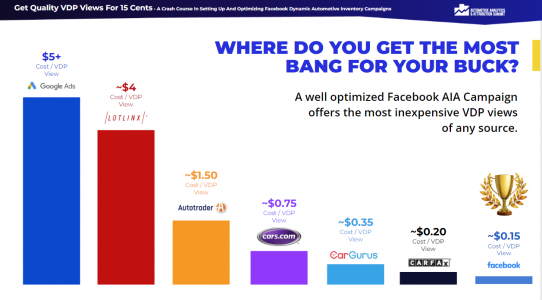Here's the crucial difference between Target and car dealers - Target can use Facebook's ROAS (return on ad spend) algorithm to optimize dynamic catalog campaigns to generate the highest ROI.
Since car dealers aren't an e-commerce business, we are relegated to using Facebook's other optimization strategies (content views for example) that don't always translate into sales.
And I'm sure Target is still segmenting their catalog across product categories, among many other attributes, to really tailor their ads and generate demand where they see fit.




 and in this particular case, your company is getting called out! I wish more people from LotLinx were posting in this thread with their perspectives. DealerRefresh isn't a bunch of YouTube-commenting trolls - we're rational people looking to make informed decisions. It goes a long way when you're open and honest with this community. Thank you for posting,
and in this particular case, your company is getting called out! I wish more people from LotLinx were posting in this thread with their perspectives. DealerRefresh isn't a bunch of YouTube-commenting trolls - we're rational people looking to make informed decisions. It goes a long way when you're open and honest with this community. Thank you for posting, 



